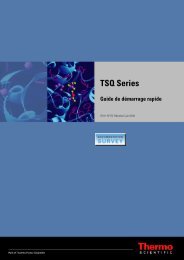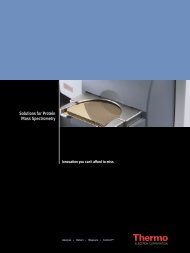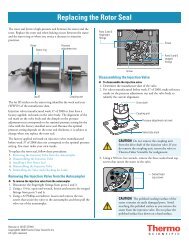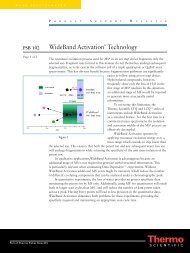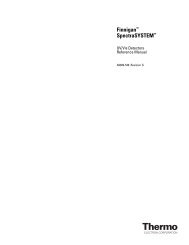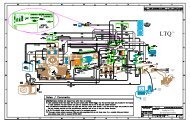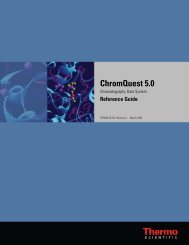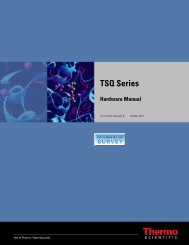LTQ Orbitrap XL Hardware Manual
LTQ Orbitrap XL Hardware Manual
LTQ Orbitrap XL Hardware Manual
Create successful ePaper yourself
Turn your PDF publications into a flip-book with our unique Google optimized e-Paper software.
Functional Description<br />
<strong>Orbitrap</strong> Analyzer<br />
HCD Collision Cell<br />
The collision cell consists of a straight multipole mounted inside a metal<br />
tube which is connected in direct line-of-sight to the C-Trap.<br />
Figure 1-14 shows a close-up view of the configuration.<br />
HCD collision cell<br />
Figure 1-14. HCD collision cell and C-Trap<br />
1-18 <strong>LTQ</strong> <strong>Orbitrap</strong> <strong>XL</strong> <strong>Hardware</strong> <strong>Manual</strong> Thermo Fisher Scientific<br />
C-Trap<br />
It is supplied with a collision gas through the open split interface,<br />
providing increased gas pressure inside the multipole. The choice of<br />
collision gas is independent from the gas in the C-Trap. See topic “Gas<br />
Supply” on page 1-25 for details. The front of the tube is equipped with<br />
a lens for tuning transmission and ejection to/from the C-Trap. The ion<br />
optic supply board provides the voltages for the collision cell. (See<br />
page 1-46.)<br />
For HCD (Higher Energy Collisional Dissociation), ions are passed<br />
through the C-Trap into the collision cell. The offset between the<br />
C-Trap and HCD is used to accelerate the parents into the gas-filled<br />
collision cell.





